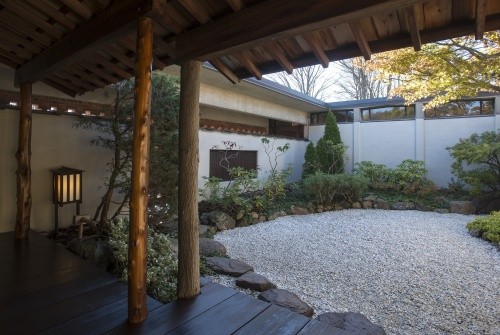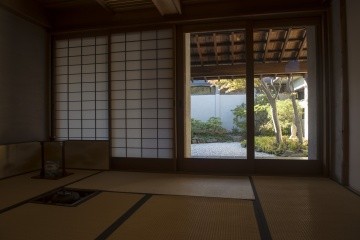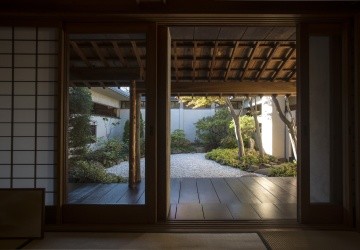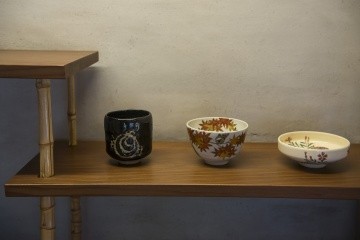
Wa-shin-an: Japanese garden and teahouse
On the top floor of Eliot House sits Wa-shin-an, a traditional Japanese teahouse and garden, built in 1984 through the generosity of alums and friends of Mount Holyoke College. Wa-shin-an translates literally as “Peace-Mind-House.” It offers a refuge from the myriad distractions that can plague modern life, a place to cultivate attentive repose.

The way of tea, chado, is a traditional Japanese art with roots in Zen Buddhism. It centers around the ceremonial and meditative preparation and shared imbibing of matcha, powdered green tea. A tea ceremony, chanoyu, can happen anywhere tea practitioners and guests might gather. Yet intentional spaces for chanoyu, designed to nurture an experience of natural beauty and a peaceful state of mind, are especially valued.
Teruo Hara (1929-1986), noted architect, artist, and ceramist, constructed the teahouse and the garden's enclosure with traditional Japanese hand tools in the sukiya zukuri style, which emphasizes a simple, unadorned design in natural materials. This architectural style is attributed to Sen no Rikyu, the 16th-century Zen Buddhist monk who was the most significant influence on chado.

Landscape architect Osamu Shimizu designed and planted the garden in the kare sansui style, which symbolically gathers the world into a small, balanced space. The white pebbles may be viewed as the sea, and the larger stones can be understood as mountains and cliffs which bound the sea. Other plantings suggest inland forests and fields. Beneath a Japanese maple stands a statue of Jizo, a bodhisattva (enlightened being) of compassion known to care for the powerless in society.
Wa-shin-an was named and dedicated by Sen Genshitsu, the 15th hereditary head teamaster of Urasenke, one of the three main Japanese schools of tea which traces its lineage to Sen no Rikyu.

Master of Tea, Nobue Socho Yamashita performed chanoyu in Wa-shin-an from its founding until her retirement in 2013. During the same period, her husband, Tadanori Yamashita, Professor of Religion at Mount Holyoke, led zazen, seated Buddhist meditation, inside the teahouse. Their vision of a place for nourishing beauty and meditative practice within Eliot House was fundamental to the foundation of Wa-shin-an.
Today, Wa-shin-an partners with Urasenke Boston to perform demonstrations of chanoyu on occasions during the academic year. Also during the academic year Wa-shin-an is open for regular hours for anyone to visit. Visitors can meditate in the space, sketch, read, or just quietly sit and enjoy its beauty. Classes and organizations can make special arrangements to visit outside of regular hours.